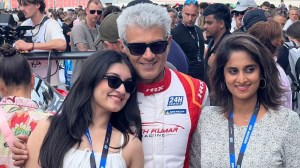British scientists announce birth of designer sheep
PARIS, JUNE 29: The creators of Dolly, the sheep, the world's first cloned mammal, have devised a revolutionary method of gene splicing th...

PARIS, JUNE 29: The creators of Dolly, the sheep, the world’s first cloned mammal, have devised a revolutionary method of gene splicing that could lead to tailor-made animals, the British science weekly Nature reports.
Two female lambs, called Diana and Cupid, have been cloned from the sheep DNA that has been altered to contain specific changes, it says.
The work–likely to fan a fierce ethical debate about genetic modification of animals–was carried out by a team led by Alexander Kind at PPL Therapeutics Ltd., based in Edinburgh, Scotland.
At present, inserting genes into mammals, with the goal for instance of getting the animal to produce proteins that can be used in medical research, is a relatively simple affair but with hit-and-miss results.
It entails putting DNA into the nucleus of a fertilised egg. The transplanted material sometimes lands on a different spot on the chromosome and does not interact with the targeted genes, thus failing to produce the desired protein.
In addition, the animals’ so-called endogenous genes, located in eggs and sperm, cannot be specifically altered using this technique, meaning that changes are unlikely to be handed down to subsequent generations.
In contrast with this blunderbuss technique is the sniper’s rifle reported by the Kind team.
They inserted a DNA sequence into a specific spot, colia1, on the chromosome of an adult sheep’s cell. The modified cell was then fused with a sheep’s egg from which the nucleus, or core, had been removed.
Diana and Cupid, which have been grown from these eggs, carry the desired genetic change, the team reports. In this case, the modification was a gene that produced a human protein called alpha-1-antitrypsin. Lack of this protein can cause the lung disease familial emphysema.
Tacked onto the inserted genes was an instruction sequence to ensure that the gene would only be “switched on” in the mammary gland tissue of lactating ewes.
In a commentary, molecular biologists Milind Suraokar and Allan Bradley of the Baylor College of Medicine in Houston, said the Edinburgh team had carried out the world’s first simultaneous cloning and genetic modification.
“We are clearly at the dawn of a new era in mammalian genetic technology,” they write. “Until now, no-one had shown that it would be possible to specifically modify endogenous genes by cloning.”
In agriculture, the technique could be used to strip out undesirable genes in animals, producing for example flocks of sheep that are resistant to the brain disease scrapie, Suraokar and Bradley suggested.
Genetic manipulation has stoked a passionate debate about ethical aspects and the environmental consequences. Supporters of the technology say that modified plants, livestock and fish could produce more food to help feed the world’s fast-growing population of six billion.
Opponents say interference with the natural gene pool could have nightmarish effects, creating new strains of superweeds and pests, or animals carrying diseases that could leap the species barrier and affect humans.
In contrast, they have generally acquiesced in limited genetic research for medical purposes.
On Monday, scientists announced they had completed a working draft of the human genetic code, an achievement that, eventually, may lead to cures for scores of inherited diseases. It has also raised worries that the knowledge could be abused, to make “designer” children.
Dolly, a Finn Dorset sheep born on July 5 1996, was the world’s first cloned mammal. It was reportedly named after the country and western singer Dolly Parton. Other cloned creatures have similarly been given cute names, apparently to avoid public disquiet. Cupid’s and Diana’s real names are lamb 990502 and lamb 990503.





- 01
- 02
- 03
- 04
- 05


























